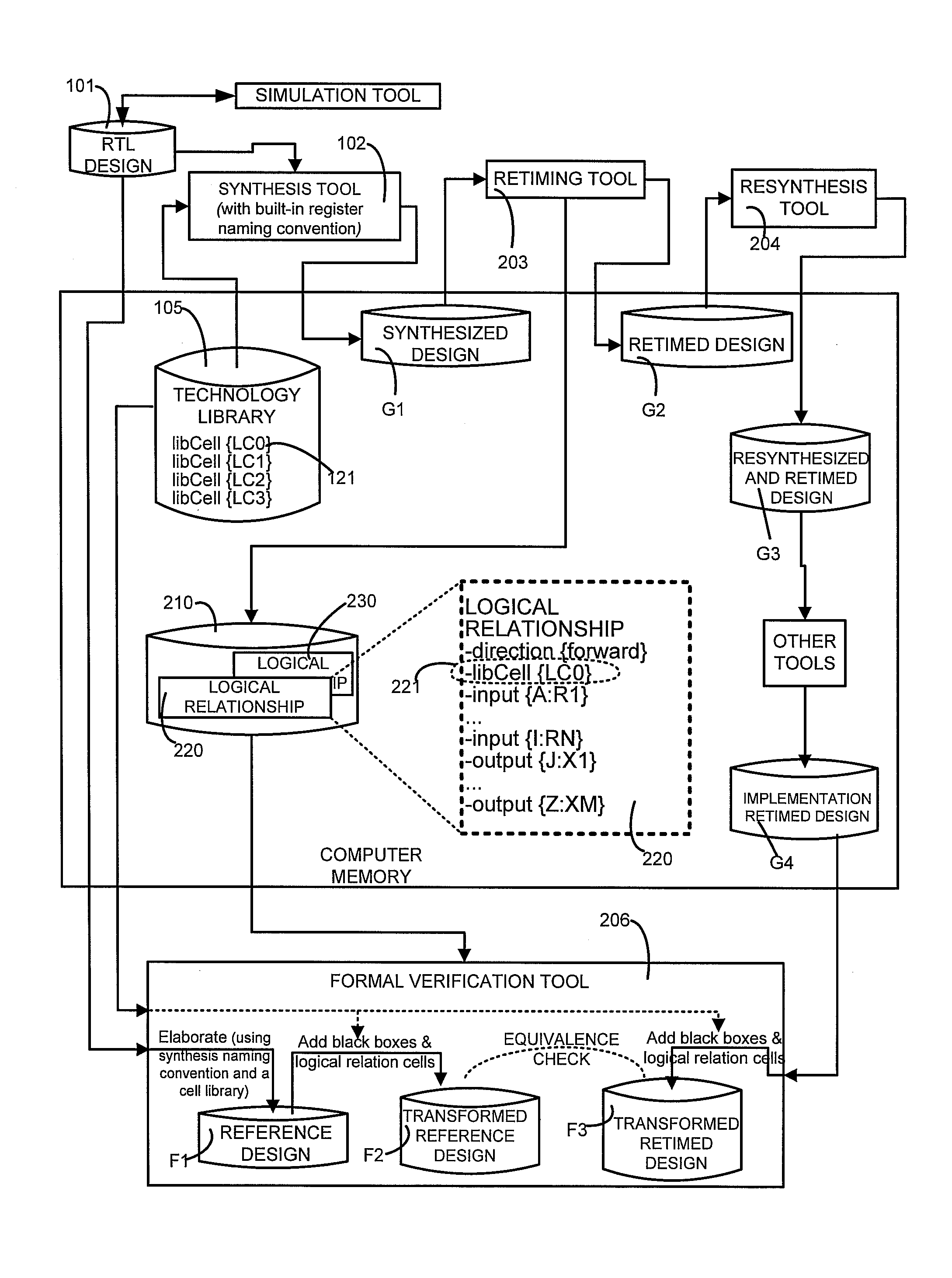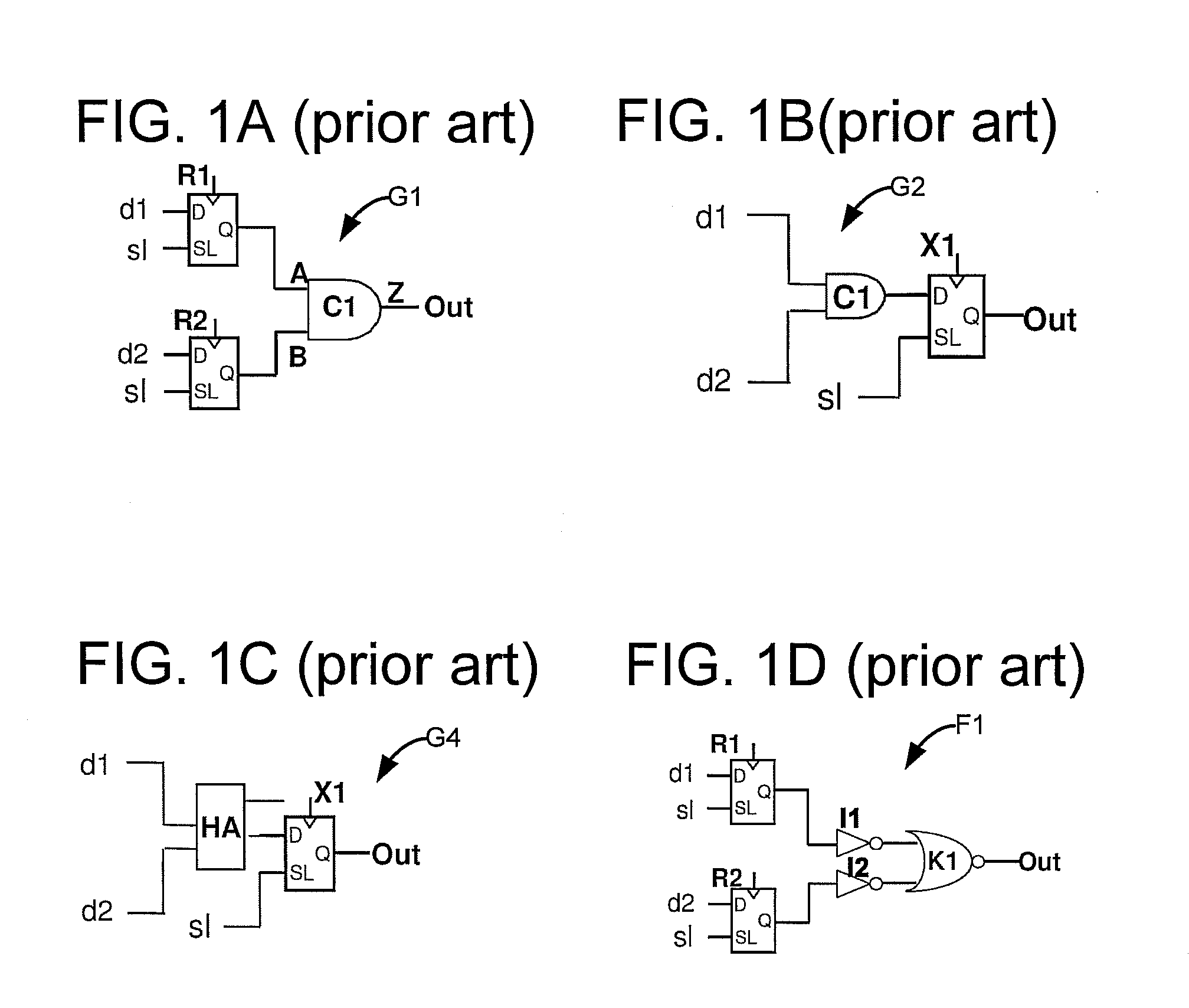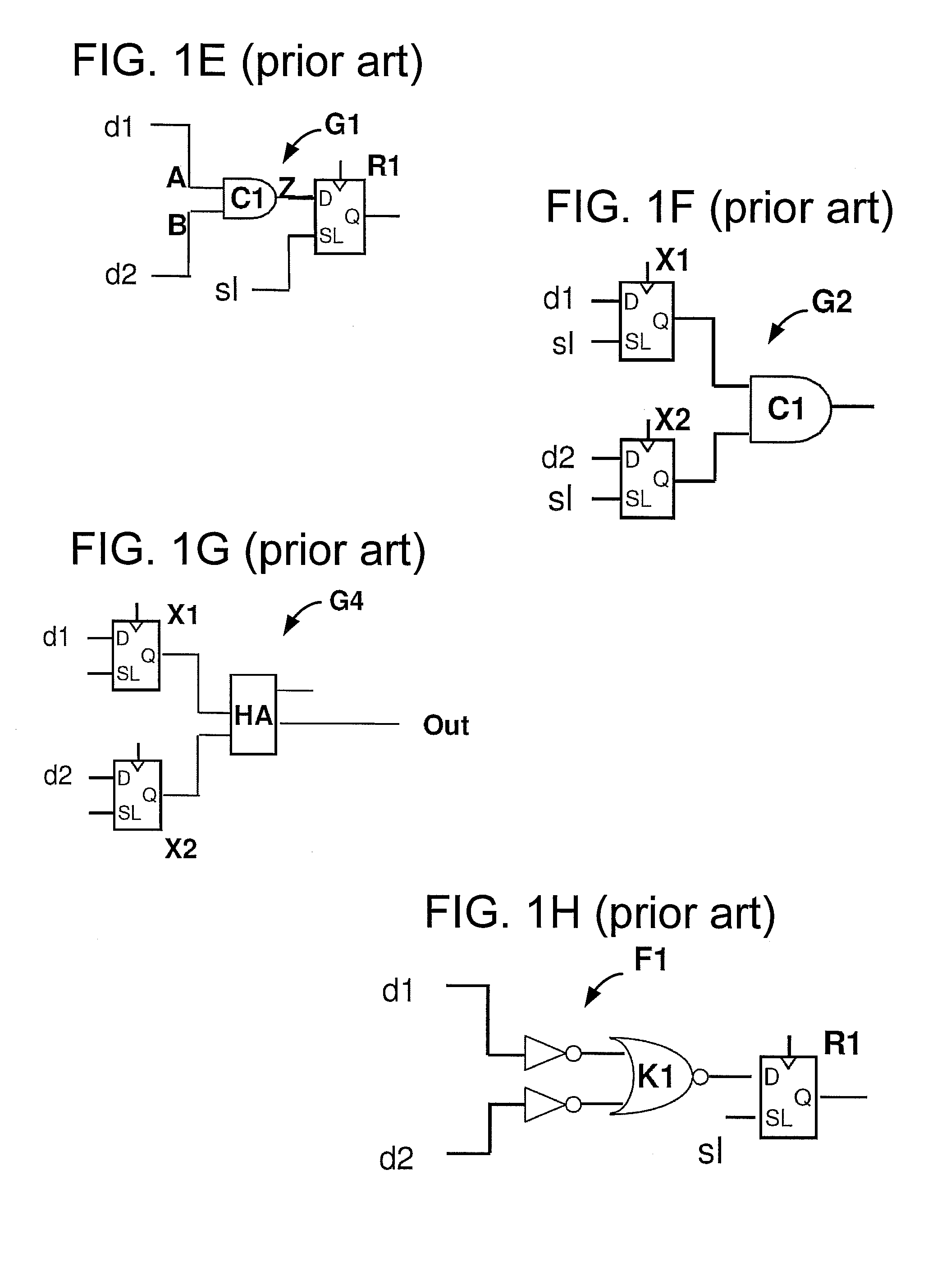Transformation of IC designs for formal verification
a technology of formal verification and integrated circuit, applied in the field of verification of integrated circuit design, can solve problems such as ineffective combinational equivalency checking by formal verification tools, comparison point mismatches can occur, and inability to match, so as to achieve the effect of effective implementation of retiming moves
- Summary
- Abstract
- Description
- Claims
- Application Information
AI Technical Summary
Benefits of technology
Problems solved by technology
Method used
Image
Examples
Embodiment Construction
[0049]A ‘netlist’ is a representation of an electronic circuit used to perform optimizations. A netlist consists of cells and nets. A netlist can have a name for identification. The netlist name can also be referred to as the design name. A ‘net’ represents the connection on which electrical signals travel between cells. A ‘cell’ represents an electronic device that performs a certain function. A cell has a name for identification. A ‘library cell’ is a description of the properties of identical cells instantiated in a netlist of an electronic circuit. The description includes the pins of the cells and the pin names as well the functional relationship (i.e. the output pin values as a function of the signal values at the input pins) between the pins, e.g. specified as a method to compute the signal values at the output pins given the signal values at the input pins). Optionally the description may include physical information for the cells such as delay information, area or floorplan...
PUM
 Login to View More
Login to View More Abstract
Description
Claims
Application Information
 Login to View More
Login to View More - R&D
- Intellectual Property
- Life Sciences
- Materials
- Tech Scout
- Unparalleled Data Quality
- Higher Quality Content
- 60% Fewer Hallucinations
Browse by: Latest US Patents, China's latest patents, Technical Efficacy Thesaurus, Application Domain, Technology Topic, Popular Technical Reports.
© 2025 PatSnap. All rights reserved.Legal|Privacy policy|Modern Slavery Act Transparency Statement|Sitemap|About US| Contact US: help@patsnap.com



